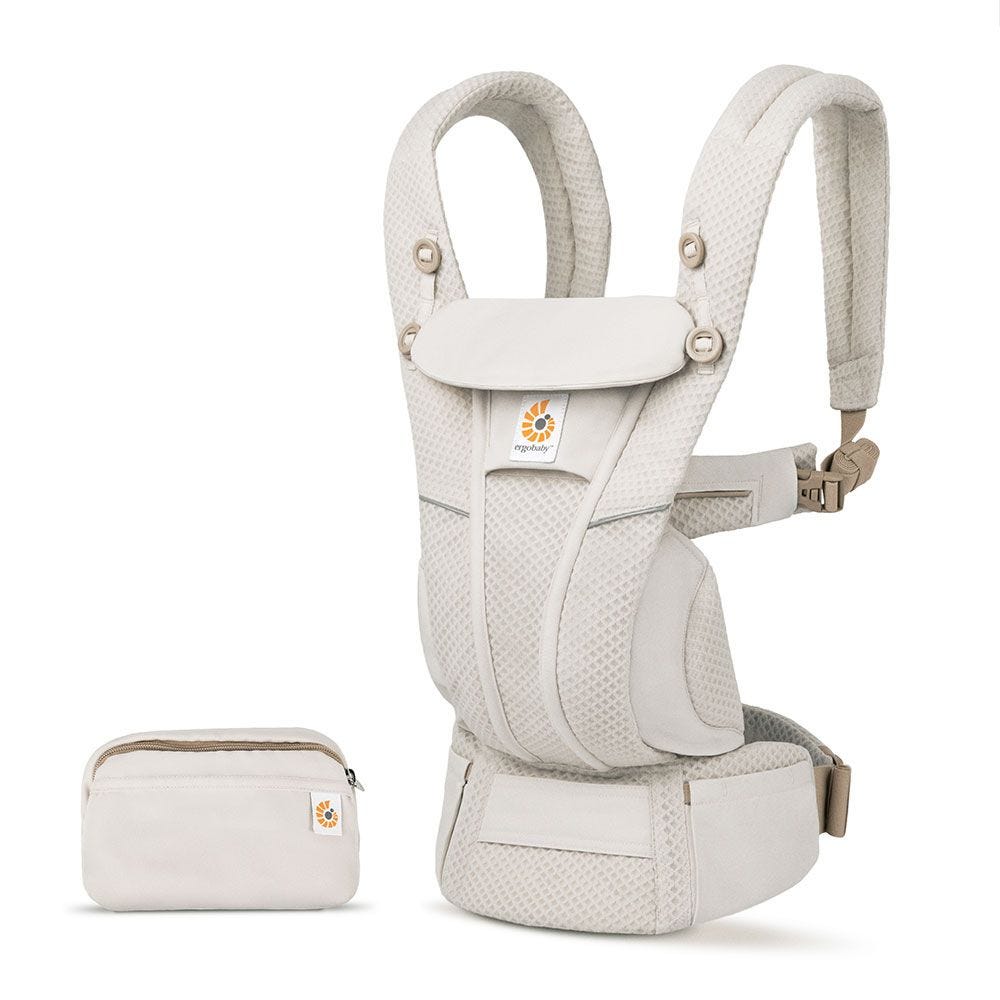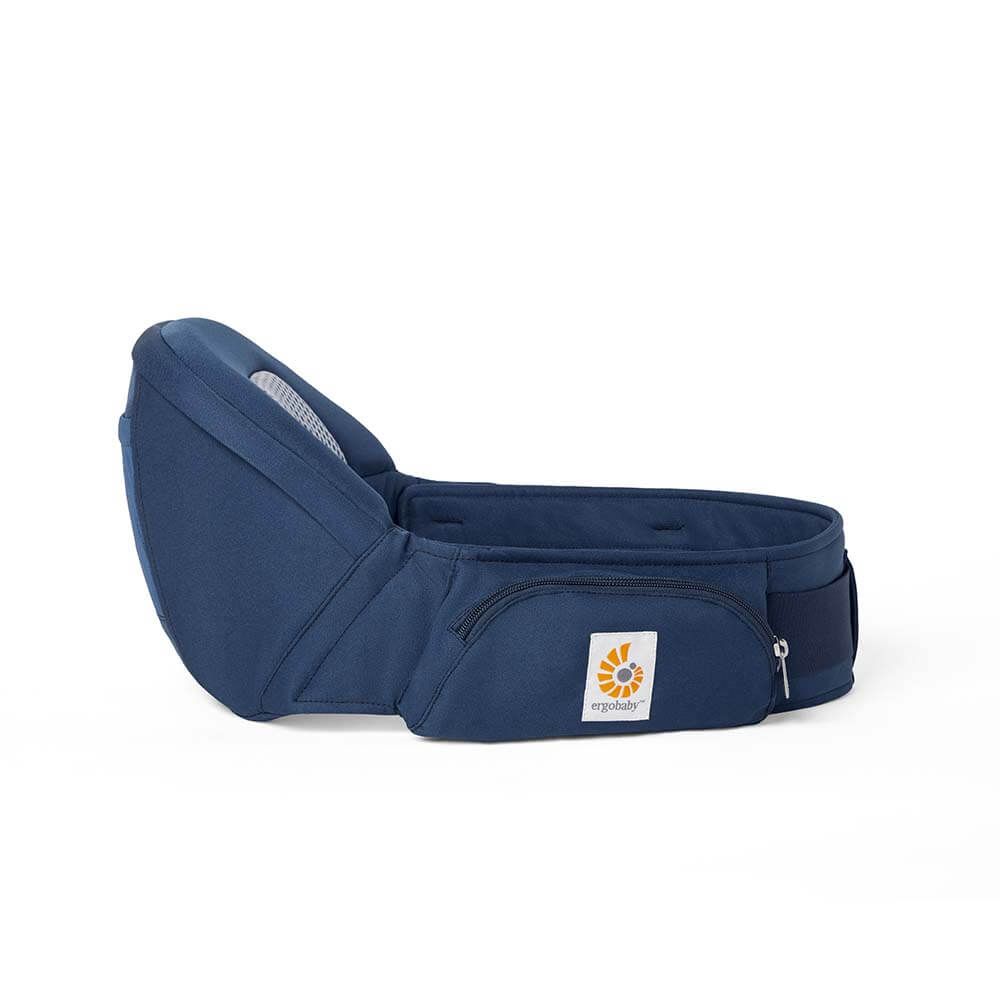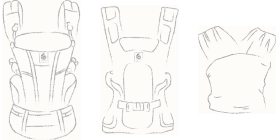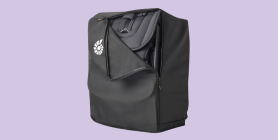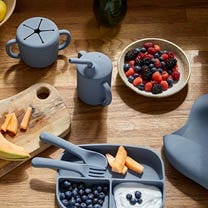
GUPPYFRIEND Washing Bag: captures microplastics
Protect your carrier when washing. Washing Bag helps care for your baby carrier by reducing fiber shedding and capturing plastic microfibers which otherwise would have gone into rivers and oceans.
- Reduces pilling, extending the life of your baby carrier and other synthetic clothes
- Catches and prevents synthetic microfibers from entering the environment through wastewater
- Zip fastening secures laundry items inside for the duration of the wash cycle
- Made from monofilament fabric that doesn’t lose fibers itself
- Keeps the environment front of mind – your daily reminder to reduce your use of plastics
- Patented design and made in Europe
- Size: 50 x 74 cm
Faqs
What types of clothes or baby carriers can be used in the GUPPYFRIEND Washing Bag?
The GUPPYFRIEND Washing Bag was developed to help reduce the amount of microplastic fibres entering the environment. These break off, for example, when washing synthetic textiles (polyester, acrylic, nylon, etc.). It therefore makes sense to wash particularly these textiles in the bag. Fleece jackets, sportswear and outdoor clothing are often made entirely or to a large extent of synthetic fibres, but most other garments also contain a certain amount of synthetics. You can check the care label to see what your garments are made of. However, clothes made of pure cotton and wool can also be washed in the GUPPYFRIEND Washing Bag, because textiles made of natural materials also lose fibres. Washing in the GUPPYFRIEND Washing Bag significantly reduces fibre breakage and thus protects your clothes from wear and tear. You can enjoy your clothes much longer - another sustainable advantage of the Guppyfriend Washing Bag. By the way: Unfortunately, synthetic fibres may even be present in clothes if they are not indicated on the care label. The rules for listing the components on care labels vary widely, thus a jumper labelled as 100% wool may contain up to 10% of synthetic fibres. ALL Ergobaby carriers can be machine washed using the GUPPYFRIEND Washing Bag. Please refer to the invidiual baby carrier washing instructions.
What is the best detergent to use with the GUPPYFRIEND Washing Bag?
To protect your clothes and for a good wash result, we recommend using a plastic free liquid detergent, such as the GUPPYFRIEND Detergent. Washing powders often contain abrasive particles that cause more fibre breakage and can leave deposits on your laundry. But whether you use washing powder or liquid detergent, in both cases it is important to pay attention to the dosage. Too much detergent damages your clothes and the environment. Only natural detergents without synthetics, such as abrasive particles, gel and skin-forming agents, gums and silicones, opacifiers, acrylates and cross-polymers are not problematic. If you use washing powder, please make sure that it does not contain any liquid plastics or rubbers (xanthan gum) or abrasive particles and that the detergent is well dissolved before it gets onto the laundry. Since liquid detergent is mainly sold in plastic packaging, you can also fill your own liquid detergent in many zero-waste shops, which of course improves the eco-balance even more. Fabric softeners can also leave plastic deposits on the fabric. Thus, they not only harm the GUPPYFRIEND Washing Bag, but also the environment.
At what temperature can I wash my baby carrier using the GUPPYFRIEND Washing Bag?
Make sure to fasten all the baby carrier buckles before washing. Put your baby carrier and other clothing in the GUPPYFRIEND Washing Bag, close the zipper all the way into the zipper cover and wash as usual together with other clothes next to the bag at a maximum of 30°C. Please take out the damp baby carrier and clothes, remove the captured fibers from the hem and dispose of them in the non-recyclable waste. If you are not washing your baby carrier and using the GUPPYFRIEND Washing Bag for clothes, GUPPYFRIEND reccomend washing at a maximum temperature of 40°C.
Why is my laundry still wet when it comes out of the washing machine? How can I avoid an imbalance when washing with the GUPPYFRIEND Washing Bag?
When washing with the GUPPYFRIEND Washing Bag an imbalance can occur during the spin cycle. To prevent damage to the washing machine, the spin cycle is often automatically stopped or the speed reduced. This can result in your laundry coming out of the washing machine very wet. To avoid this, it is important to always put additional garments without any synthetic fibres into the washing drum when using the GUPPYFRIEND Washing Bag. You can also add another filled washing bag. This prevents an imbalance and your washing machine should spin as usual.
Can the GUPPYFRIEND Washing bag be put in the tumble dryer?
No. During the drying process, just what is not supposed to happen, happens: Due to static charging, the broken microfibres pierce through the bag and end up in the laundry drum and ultimately in the environment. The reason for this is that the electrostatic reaction of round plastic material (such as synthetic clothing and the round PET monofilaments of the GUPPYFRIEND Washing Bag) creates a magnetic field. Broken fibres are attracted and orientate themselves at a 90° angle to the mesh of the GUPPYFRIEND Washing Bag. Aligned in this way, they can pierce the material and go straight through the mesh. In the washing machine, there is water in and around the bag and the broken fibres lie at various angles on the net, so they cannot pierce through it.
How do I dispose of the collected microfibres?
Please dispose of the collected microfibres in the residual waste. It is best to collect and dispose of the collected fibres in a closed container. This reduces the chance of the small and very light synthetic fibres being blown away during waste collection and to end up in the environment. Microfibres do not belong in recyclable waste (yellow bin, yellow bag, green dot) because they cannot be recycled. By the way: In Germany, residual waste is used to generate electricity and does not end up in landfills. The exhaust gases from waste incineration are filtered and 99% of them are non-toxic. If you don't live in Germany, you can check the Waste Atlas here http://www.atlas.d-waste.com to see what happens to the waste in your region.
Does the GUPPYFRIEND Washing Bag really work? Who tested it and what are the results?
The GUPPYFRIEND Washing Bag was tested over a period of three years by scientific institutes, universities, representatives of the outdoor and textile industry, as well as retailers. These tests serve as a basis for offering the GUPPYFRIEND Washing Bag as a temporary solution against microplastic pollution. In particular, we have tested with the following scientific and independent institutes: • German Textile Research Centre North-West, DTNW • Fraunhofer Institute UMSICHT • University of California at Santa Barbara as part of the Patagonia research programme. Results: The GUPPYFRIEND Washing Bag prevents fibre loss during washing in two ways: 1. The GUPPYFRIEND Washing Bag drastically reduces the number of fibres that break off. Tests by the Fraunhofer Institute UMSICHT showed on average: a) 79% with partly synthetic clothes b) 86% with completely synthetic clothing. Thus, the clothing can be worn much longer. 2. In addition to being gentle on clothing, broken plastic fibers are also retained.This results in the Guppyfriend Wash Bag reducing microplastic fiber pollution by over 90%, mostly close to 100%. Other test results: • No toxic residues were found on the product. • The bags can withstand 50 household washes according to ISO 6330 without damage and do not release any microplastic particles into the water themselves (Note: when used correctly, the GUPPYFRIEND Washing Bag can also be used beyond the tested number of 50 washes). • Cleanliness after washing: Blood, ketchup and chocolate are washed out without any problems. The washing effect of skin grease and clay is sufficient. • The number of broken fibres depends on the washing conditions and the clothes themselves. In summary: The GUPPYFRIEND Washing Bag significantly reduces fibre breakage. The fibres that break off during washing are retained in the bag. The clothes become clean and - if the wash bag is used correctly - it can be used for a long time to keep microplastics out of our rivers and oceans. Click here for the test results.
I can hardly find any fibres in the bag. What am I doing wrong?
Well done. The fewer fibres you find in your GUPPYFRIEND Washing Bag after washing, the better. The GUPPYFRIEND Washing Bag has been designed to prevent microfibre loss at source. Due to the smooth surface and structure of the material, fewer microfibres break off during washing. This ensures that your clothes are protected, pilling is avoided and fibre loss is reduced. According to a test series by the Fraunhofer Institute UMSICHT, synthetic clothing loses on average 86% fewer fibres compared to washing without the GUPPYFRIEND Washing Bag. The microfibres that nevertheless break off accumulate over time. You are most likely to find them in the corners or at the hem. By the way: The number of fibres that break during washing depends on the type of clothes and the way you wash them: very new or very old clothes tend to lose more microfibres. The higher the temperature, the more likely it is that microfibres will break off. The softer the fabrics, the fewer fibres will break off, etc. You can find more washing tips to reduce microplastic pollution in our washing guide “Wash better”.
How often can I use the GUPPYFRIEND Washing Bag?
If you follow our instructions for use, you can use your bag for many wash cycles. After a few washes, the washing bag won't look like new, but it will still do its job perfectly.
How do I dispose of the GUPPYFRIEND Washing Bag?
The GUPPYFRIEND Washing Bag is entirely made of polyester and is designed to be fully recyclable. The best thing to do is to remove the zip first and dispose of the zip and the bag in the yellow bin (yellow bag, green dot) and thus introduce it into the recycling system.

